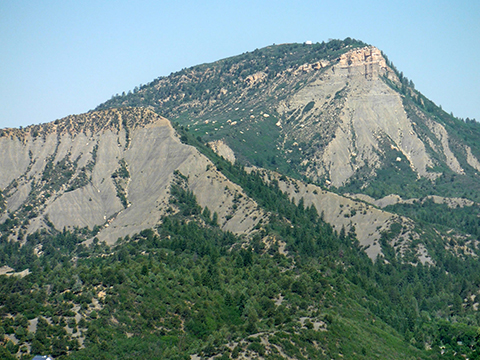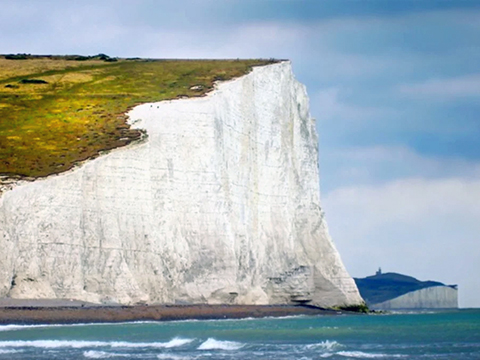Prelude
The Cretaceous Period was a continuation of the Jurassic Period in many ways. Following the opening of the north Atlantic, the southern Atlantic Ocean basin finally began to open. In western North America, the subduction- Sevier and Laramide orogenies created new landscapes across western North America. The climate continued to be warm, and rising sea levels periodically caused shallow seas to inundate much of North America and Europe. This climate also fostered diverse plant and animal life, even in polar regions like Antarctica. Countless species of reptiles dominated the air, land, and sea. Flowering plants finally appeared and graced the Earth's surface with a beauty it had not witnessed in over four billion years. And though many of these life forms did not survive the large mass extinction event that ended the Mesozoic Era, the fossilized remains and other clues allow us to reconstruct their world and get a glimpse at what life during the Cretaceous was really like.
|
Figure 13-1. Cretaceous marine rocks of North America and Europe. Mancos Shale underlies most of Perins Peak west of Durango, Colorado (left). |
|
What Will You Do Today?
A. The Cretaceous Period - Review the Cretaceous portion of geologic time
B. Cretaceous Geology & Life Forms - Learn more about Cretaceous geology and life forms
C. Colorado Plateau Geology - Evaluate the Cretaceous geology of Arizona's Colorado Plateau
D. Laramide Geology - Examine the geologic structures exposed in Montana and Arizona that represent the Late Cretaceous to Early Paleogene Laramide Orogeny


